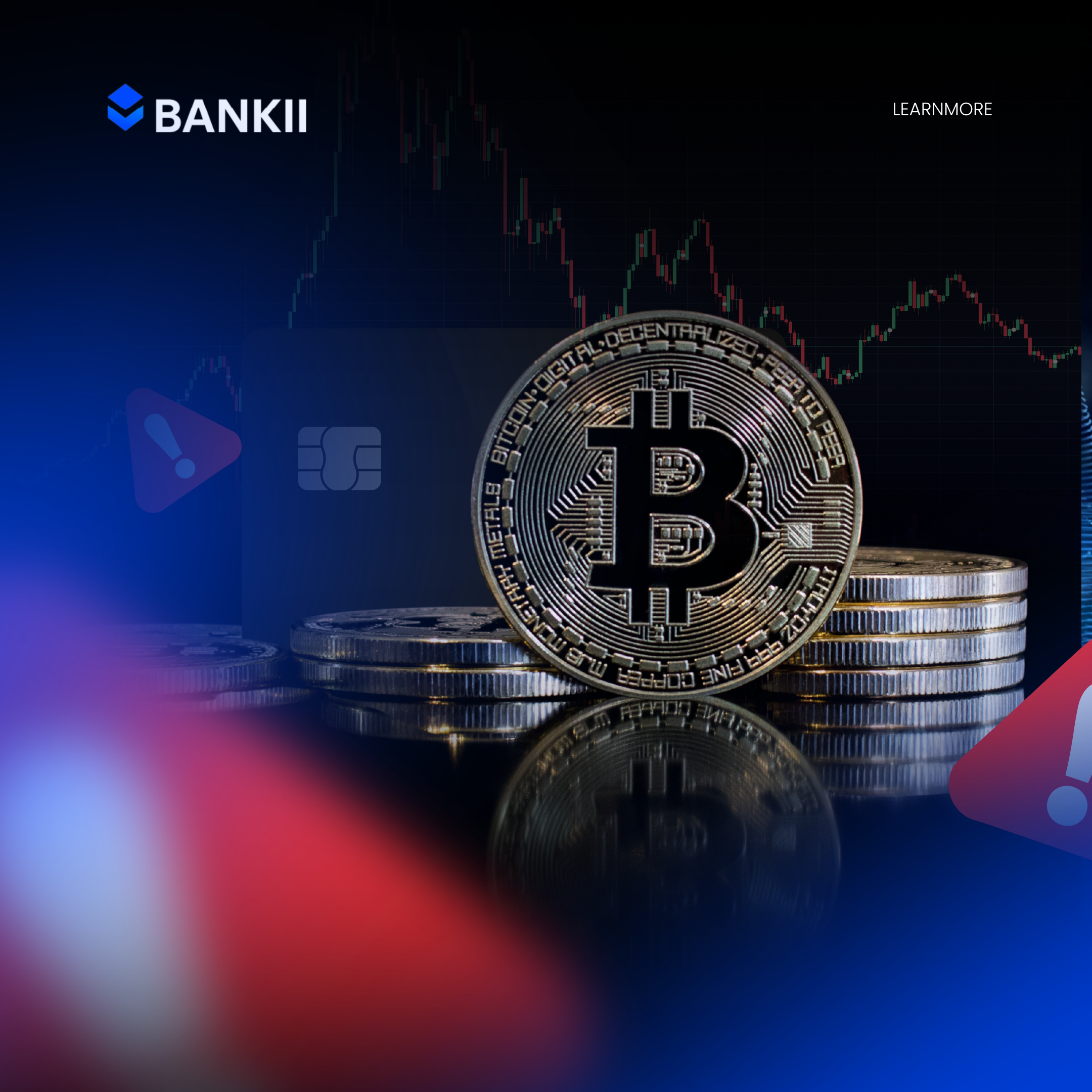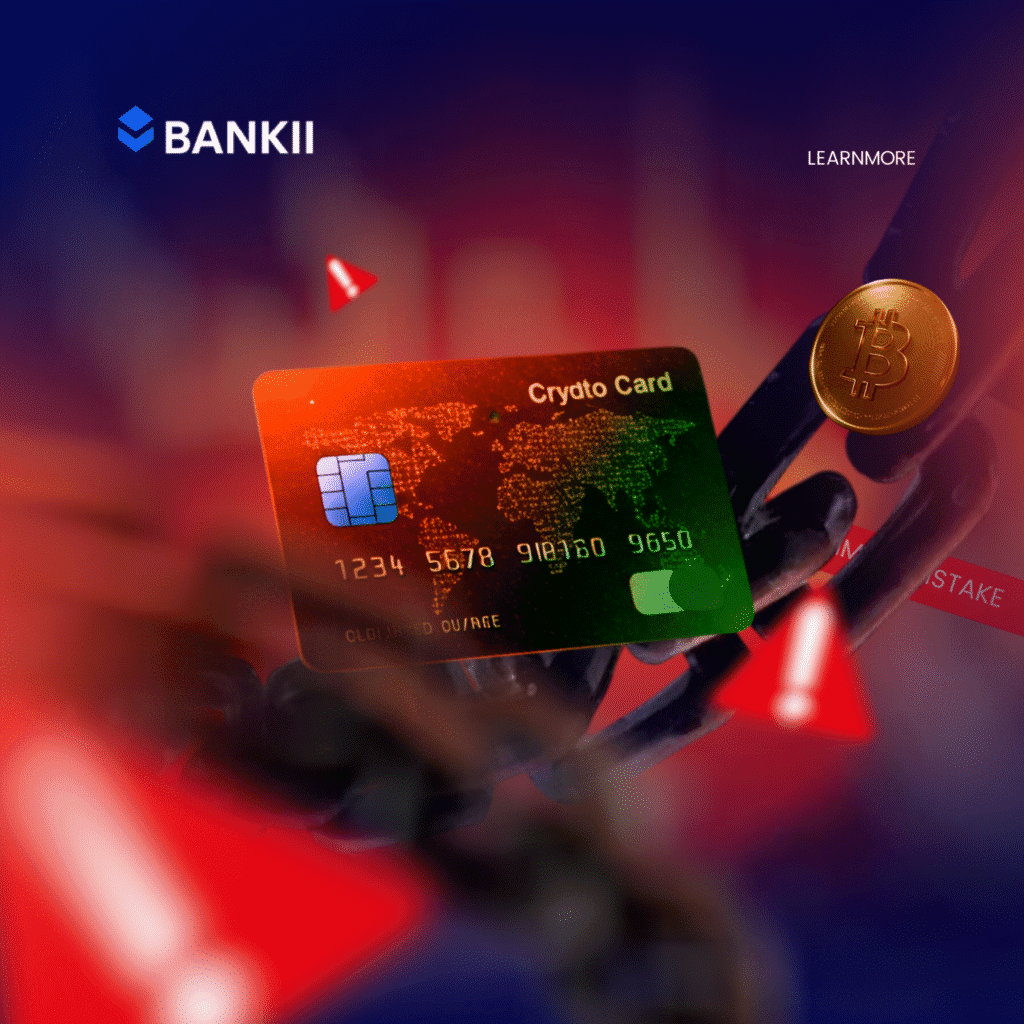
Crypto cards are reshaping how we spend money. By letting you use digital assets like USDC, BTC, or ETH the same way you use a debit card online, in-store, or across borders they open a gateway to a more flexible financial life. For many people, especially in emerging markets, they represent financial freedom and an escape from traditional banking limits.
But the ease of spending can sometimes lead to overconfidence. And that’s when costly crypto card mistakes start to creep in.
From hidden fees to failed transactions, many of the issues users face stem from simple misunderstandings of how these cards work. This guide explores the most common pitfalls, how to avoid them, and how to use your crypto card safely and effectively.
If you’re not sure how to get started, check out this guide on how to fund your crypto card in 5 simple steps
Mistake 1: Assuming Your Crypto Card Converts Automatically at Checkout
One of the most common crypto card mistakes is believing your card can pull from any crypto in your wallet, the way a bank card draws directly from your checking account.
Why It Matters
Unlike fiat-based debit cards, most crypto cards require you to preload a specific token (often a stablecoin like USDC or USDT) before spending. If you attempt to swipe your card at a store without first converting it, your transaction will likely be declined, resulting in frustration or even embarrassment at checkout.
FAQ Insight: “What’s the most common mistake users make with crypto cards?”
It’s assuming the card can draw from your whole wallet. But in reality, crypto cards often operate like prepaid cards; you need to fund them first.
How to Avoid It
- Think prepaid: Always fund your card with supported tokens before attempting a transaction.
- Use stablecoins: They’re less volatile and more universally accepted on crypto card platforms.
- Turn on alerts: Real-time balance notifications can warn you when your funds are running low.
- Choose smart platforms: Some cards, like Bankii, offer instant conversion tools or alerts if your balance is too low before a transaction.
Mistake 2: Ignoring the Real Fees Behind “Zero Fee” Promises
Many crypto card companies advertise “no monthly fees,” and while that sounds great on the surface, it doesn’t mean using the card is completely free.
Why It Matters
You may not be charged a flat monthly fee, but you could still lose money through:
- Crypto-to-fiat conversion fees
- Gas fees for blockchain transactions
- Wide exchange spreads that eat into your balance
- Foreign transaction fees when spending abroad
FAQ Insight: “Are all crypto cards truly fee-free?”
No. While some waive monthly charges, others generate revenue from hidden fees, particularly during conversions or during periods of peak blockchain congestion.
How to Avoid It
- Use stablecoins like USDT or USDC for more predictable costs.
- Check your provider’s fee schedule and conversion rates before large purchases.
- Avoid converting crypto during high-volatility periods or when the blockchain is congested.
- Choose providers like Bankii that clearly explain their fee structures.

Mistake 3: Using Public Wi-Fi to Access Your Crypto Card Dashboard
Convenience often trumps caution. But logging into your crypto card account on public Wi-Fi at an airport, hotel, or café can expose you to serious security risks.
Why It Matters
Public networks are notoriously insecure. Hackers often use these environments to intercept login credentials or plant malware. A stolen crypto card login could lead to drained funds in seconds. According to Chainalysis, personal wallets represent an underdocumented but rapidly growing frontier for crypto crime. As security improves at major services, attackers increasingly target individual wallets, seen as easier prey, leveraging sophisticated techniques, including AI tools, to exploit the rising value and expanding number of personal crypto holders.
FAQ Insight: “Is it safe to use a crypto card online?”
Yes, but only if you take precautions, such as enabling two-factor authentication (2FA) and avoiding public Wi-Fi. Your security practices matter as much as the platform’s.
How to Avoid It
- Always use a VPN when connecting to your crypto accounts on public networks.
- Enable 2FA on your card dashboard and wallet accounts.
- Bookmark trusted URLs and never click links from unknown emails, DMs, or pop-ups.
- Use personal, secure devices when managing your funds.
Mistake 4: Losing Track of Spending and Conversions
Crypto values change frequently, and that volatility makes it hard to know exactly how much you’ve spent, especially when converting from tokens to fiat in real time.
Why It Matters
This lack of clarity can cause problems for freelancers, remote workers, and anyone managing budgets or reporting income for taxes. If you don’t keep detailed records, you could face tax filing issues, or just lose track of your money entirely.
FAQ Insight: “How do I track what I spend if crypto values change?”
Use transaction logs, stablecoins, and finance apps. Export your spending history regularly, especially if you’re self-employed.
How to Avoid It
- Regularly export your transaction history for reviews and reporting.
- Connect your card to personal finance software that supports crypto.
- Keep a spending journal if you’re a freelancer or digital nomad.
- Stick to stablecoins to simplify tracking and reduce volatility concerns.
Mistake 5: Not Understanding How Your Crypto Card Works
Many users jump into using crypto cards without fully understanding how their specific card works, whether it’s custodial or non-custodial, prepaid or live-conversion, or what assets are supported.
Why It Matters
Without this knowledge, you might try to use unsupported tokens, assume insurance coverage that doesn’t exist, or miss out on key features that make your spending smoother and safer.
FAQ Insight: “Can I use my crypto card abroad?”
In some cases. Crypto cards, such as Bankii, are Visa-powered and accepted in over 140 countries. However, be sure to check for local restrictions and foreign exchange fees.
How to Avoid It
- Read your provider’s user guide and FAQs.
- Make note of supported tokens, spending limits, and region-specific rules.
- Choose cards that offer clear onboarding and multilingual support if you’re in a non-English-speaking region.
- Try a test transaction before relying on your card for major purchases or when traveling abroad.
Smarter Spending: How to Avoid Crypto Card Mistakes Entirely
Here’s a quick checklist to avoid the most common crypto card mistakes:
- ✅ Know your setup: Understand how your card works custodial vs non-custodial, what tokens it supports, and if it offers live or prepaid conversions
- ✅ Secure your access: Use 2FA, VPNs, and secure devices only.
- ✅ Track your usage: Regularly download your transactions and monitor spending.
- ✅ Stick to stablecoins: They simplify accounting and reduce price volatility.
- ✅ Stay informed: Choose platforms that offer educational support and product transparency.
Final Thoughts: Crypto Cards Are Powerful If You Use Them Right
Crypto cards have brought the utility of digital assets into the real world. They offer unprecedented flexibility, especially for users in emerging markets, freelancers, and people without access to stable traditional banking.
But crypto card mistakes can cost you.
At Bankii, we focus on building user-friendly tools and providing transparent information so you can spend smarter, not harder.
By understanding the risks, avoiding common pitfalls, and using smart habits, your crypto card can become a reliable part of your everyday financial toolkit.
Spend with confidence. Protect your assets. And keep learning.